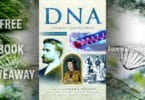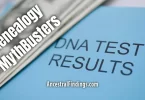We know that DNA is making a big splash in the world of genealogy research. In fact, it is becoming an indispensable part of it. That is why the page-turning book “The Family Tree Guide to DNA Testing and Genetic Genealogy,” by Blaine T. Bettinger is a must-have for your personal genealogy library collection. Whether you are new to using DNA in your genealogical work or have been using it for a while, you will learn something new and valuable about DNA and your genealogy work in this incredibly informative book.

This book is written clearly, for the lay person when it comes to DNA and genealogy, so it is super easy to understand. The newest edition has also been updated to include the latest developments in DNA research and how they apply to genealogy. In this book, you will learn what the different types of DNA tests are that are available, the pros and cons of each of these types of tests, the pros and cons of the different “big player” DNA testing companies on the market (to make it easier for you to choose which company is right for your DNA genealogy needs), the best way to choose a DNA test to answer a particular genealogy question, the benefits of doing DNA tests of more than one type and/or at more than one company, and more.
It will also teach you to understand your DNA genealogy results when you receive them back from the testing company. You will learn how to understand the true meaning of ethnicity estimates, the easiest and most accurate ways to navigate your suggested relative matches, as well as how to use third-party tools like GEDMatch to go even deeper into analyzing your DNA genealogy results.
Going over your results on a DNA testing company’s website can be overwhelming and confusing if you don’t know what you’re doing. This book teaches you what to do, and makes you a competent user of DNA in your genealogy work. There are colorful diagrams in the book that explain key DNA terms and concepts like haplogroups and Neanderthal DNA, so you know just how to apply these things to your own work. There are also case studies of the different tests offered by different DNA testing companies, so you can see in actual “real world” cases how these tests can benefit you in your genealogy work.
There is also wonderful information in this book on how adoptees, people with parents or grandparents with unknown biological fathers (or even moms), and others who know comparatively little about their ancestry can use DNA to their best advantage in discovering their genetic heritage with a powerful degree of accuracy.
DNA is becoming a common and even expected part of genealogy work. It may even be becoming a necessary tool to solve mysteries and ensure accuracy. This book tells you exactly how to use it and interpret your results to apply to your own family tree.






